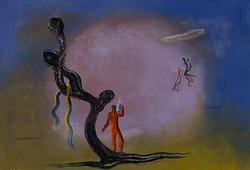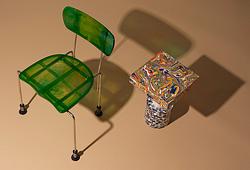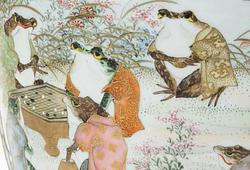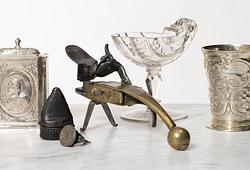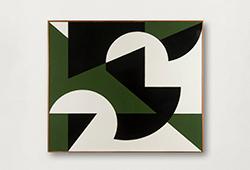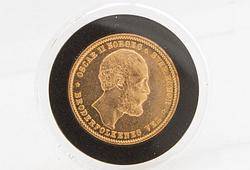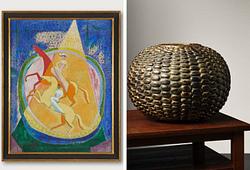Inge Schiöler grew up in a family with diverse cultural interests; his father was an amateur botanist, and his mother was trained at the Royal College of Music. It was a stimulating environment for young Inge, who developed a desire to become a painter. After attending various preparatory schools, Inge studied under Tor Bjurström at Valands Konstskola from 1926 to 1929. According to the latter, Inge always worked "... as someone with little time at his disposal and probably ruthlessly exploited his entire sensitivity and trembling nervousness."
The years after Valand were a period of exploration. Inge's painting was highly expressive and empathetic, with a varied range of subjects dominated by landscapes. Inge traveled to Spain and France, worked at the Swedish-French gallery's framing shop, and spent summers on the island of Syd-Koster. He enjoyed life in Stockholm and socialized frequently with, among others, Sven X:et Ericson, Albin Amelin, Ivar Lo-Johansson, and Harry Martinson.
In early 1933, Inge was struck by a severe case of influenza and simultaneously showed signs of mental illness. In October 1933, he was admitted to St. George's Hospital with a diagnosis of schizophrenia. Inge fell into a state of deep apathy, and no one believed he would ever paint again. Psychiatric care at the time was not as advanced and primarily consisted of confinement and various forms of shock therapy (such as electroconvulsive therapy). However, during the 1930s and 1940s, the development and use of proper medications began, contributing to improved treatment. Read more
In the spring of 1942, Inge suddenly emerged from his apathetic state, reportedly due to a visit from his nieces and nephews, which triggered an emotional response that led Inge to start drawing and painting again. He painted on anything available, with toilet paper being a favorite material. Staff had to ask relatives to send materials such as paper, pens, and crayons. He produced enormous quantities of work and worked at a hectic pace.
The subjects were very ordinary but displayed a directness and a keen eye for detail. This also provides an interesting insight into "the world of the institutionalized individual." It is noteworthy that people and specific environments are depicted – something scarcely found in his later paintings. His artworks after 1946 rarely feature people; instead, the motif world comprises the sea and nature. From 1946 onwards, Inge began receiving more and longer leaves of absence, often with escorts who accompanied him on painting trips to his cottage on Syd-Koster, which relatives had purchased for him. Now he created large, dynamic, and explosively colorful coastal landscapes, preferably in thickly applied oil paint. In 1960, Inge was discharged for good, having spent nearly 27 years of his life in hospitals.
The auction comprises 21 works on paper.




